Case Law and the Canadian Abridgement – What Can I Find by Using the Canadian Abridgment?
The print version of the Canadian Abridgment has seven major tools for researching Canadian law.
1. Case Digests
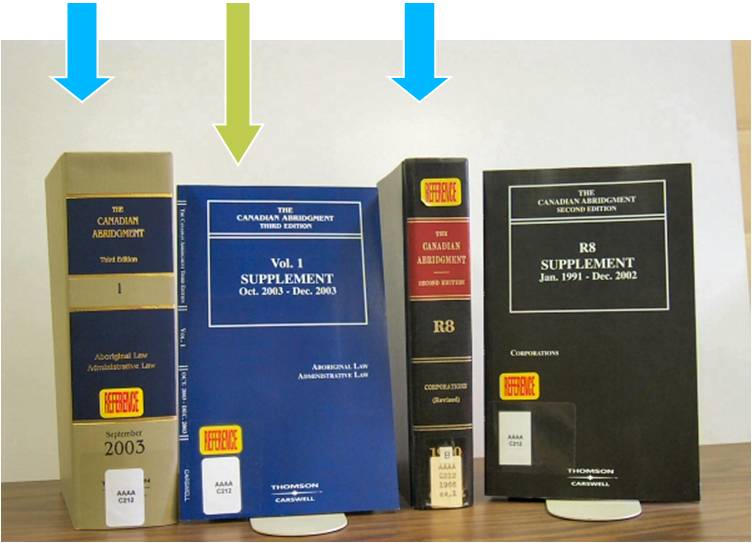
- The Abridgment's most important component.
- Also available online as part of Westlaw Canada's LawSource service.
- Used to find case law by legal issue.
- For example, if you are looking for a case on torts, first find the volumes with that subject title, then look through the Table of Classification to find the specific type of tort in which you are interested. All the cases on that specific point of law will be grouped together, saving you lots of research time. See Fig 1.1.
Fig 1.1 Example of the Case Digest Classification Scheme
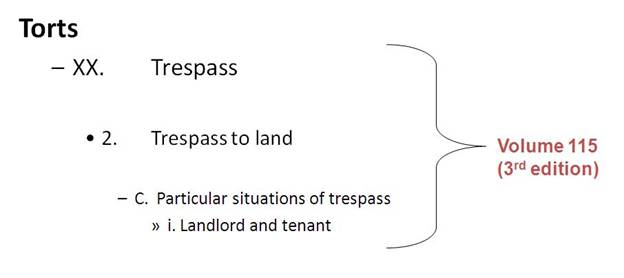
Don't forget to also check the supplement (shelved next to the hardcopy book) under the same classification code to see if any newer cases are listed. For the most recent months, the Canadian Current Law: Case Law Digests are kept at the Reserve Desk.
By reading the summary of a case, you can quickly determine whether or not you want to read the case in its entirety. By using a digest system such as the Canadian Abridgment, you can also quickly find other cases on the same topic organized under the same classification code. See Fig 1.2.
Fig 1.2 Example of a Case Digest
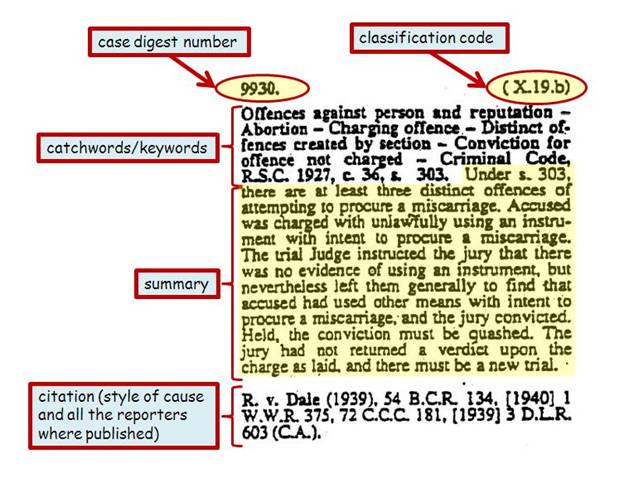
2.The Key & Research Guide / The General Index

- The Key & Research Guide is the Abridgment's Table of Contents, showing the full Table of Contents for each title in the main work.
- Use it when the topic you are interested in covers many volumes (e.g. "Criminal Law” spans 15+ volumes).
- The General Index lists the key legal concepts arising out of the digests, and are organized alphabetically by keyword, with citations to the corresponding volumes.
- Use it when you don't see the subject title you want (see Fig 1.3).
Fig 1.3
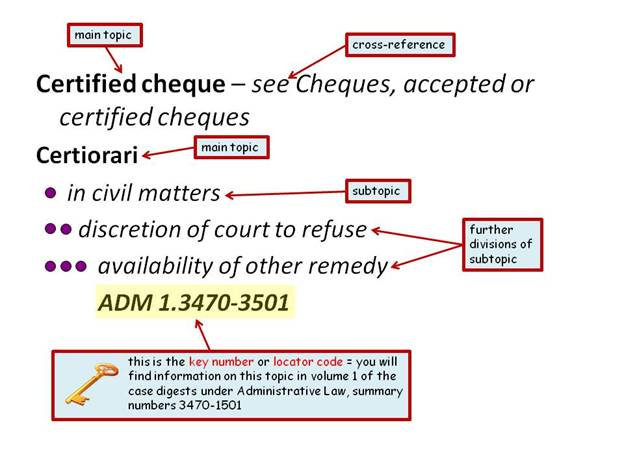
3. Consolidated Table of Cases
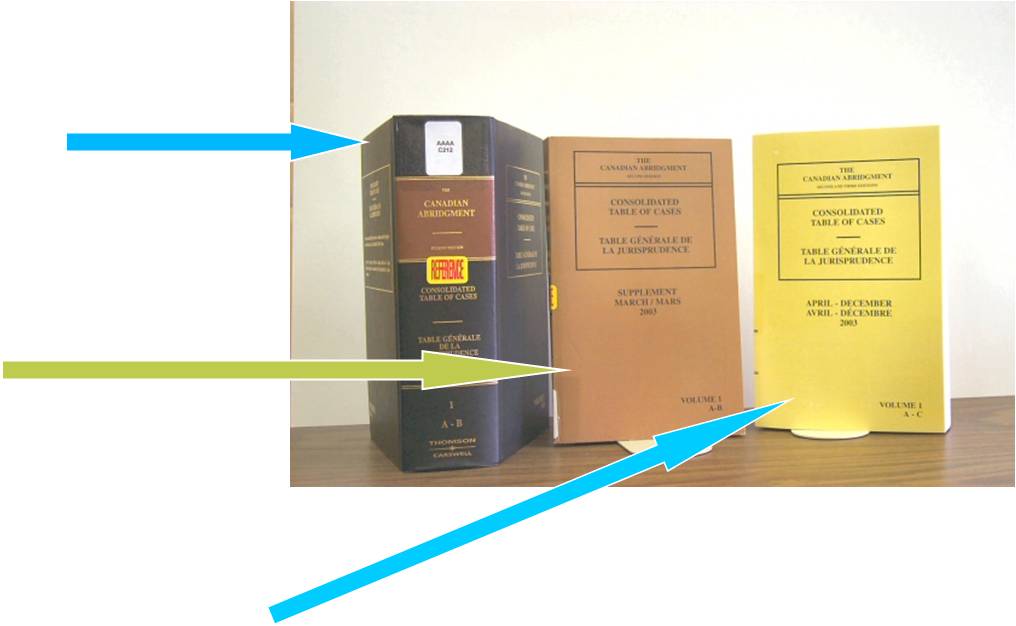
- Comprehensive listing of all the cases indexed in the Canadian Abridgment, organized alphabetically by case name.
- Usually lists a brief history of the case, all parallel references, and where you can find the case in the main Case Digests.
See Fig 1.1 in section 4.2 below for a sample entry.
4. Canadian Case Citations
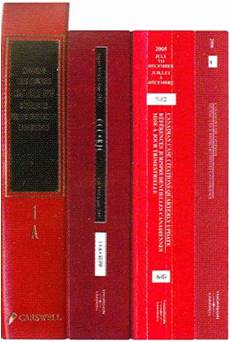
- Provides detailed history of each case, including the results of any appeals.
- Also provides the judicial treatment of a case, i.e. whether any subsequent cases have discussed the case or not.
See Fig 1.2 in section 4.2 below for a sample entry.
5. Canadian Statute Citations
- Provides references to cases that have judicially considered (discussed) specific statutes, including some foreign statutes and even international treaties.
6. Words and Phrases Judicially Defined in Canadian Courts and Tribunals
- Useful for finding judicial definitions of various words and phrases; i.e. definitions given by judges. These tend to be more authoritative than legal definitions, which you find in legal dictionaries.
- Each entry includes an excerpt from the decision which considered the word or phrase, and gives you the reference to the full-text of the case.
7. Index to Canadian Legal Literature
- Index of all legal articles and books written in Canada since 1985.
- Can be searched by subject or by author, by case name (to find case comments), or by name of legislation (to find legislative comments).
This source was discussed in more detail in the modules on secondary sources and legal periodicals.
